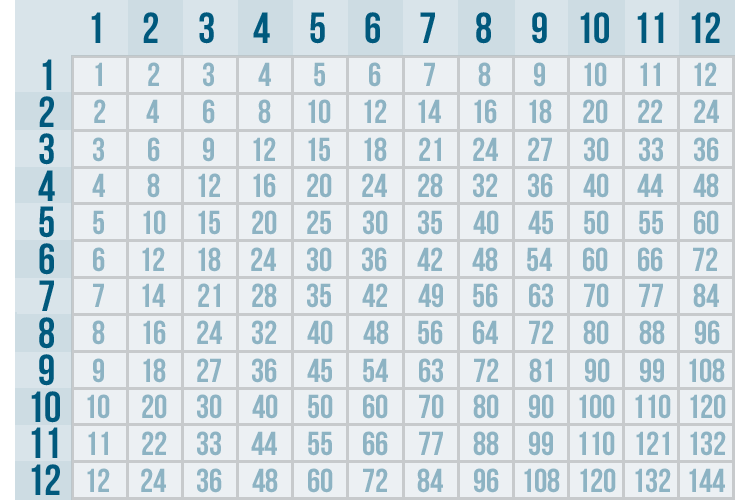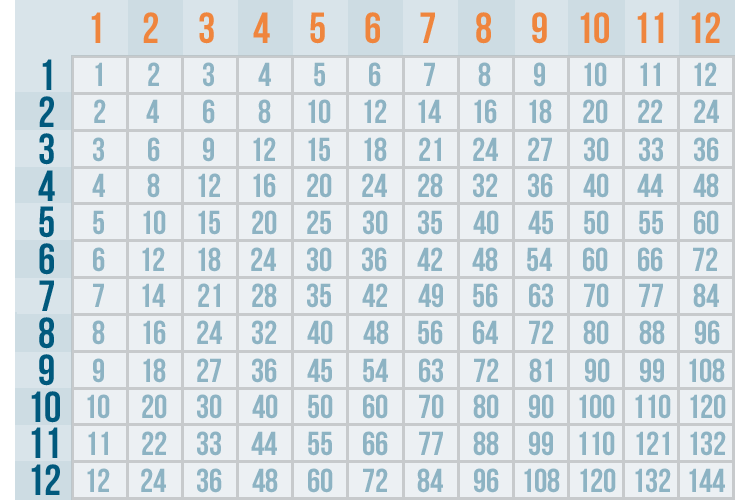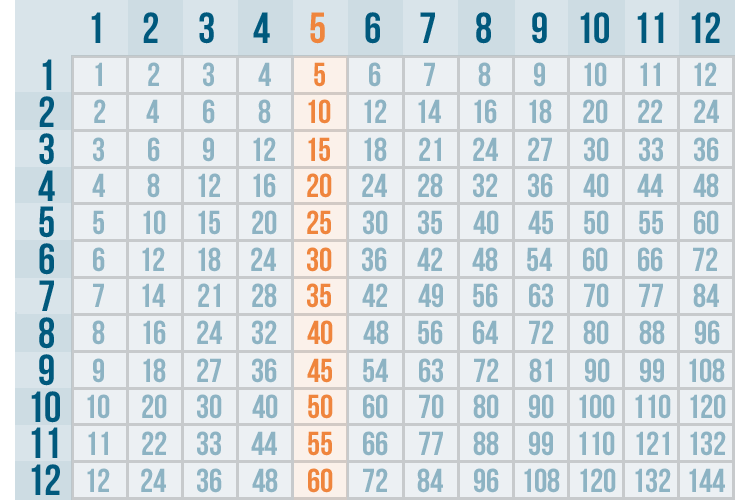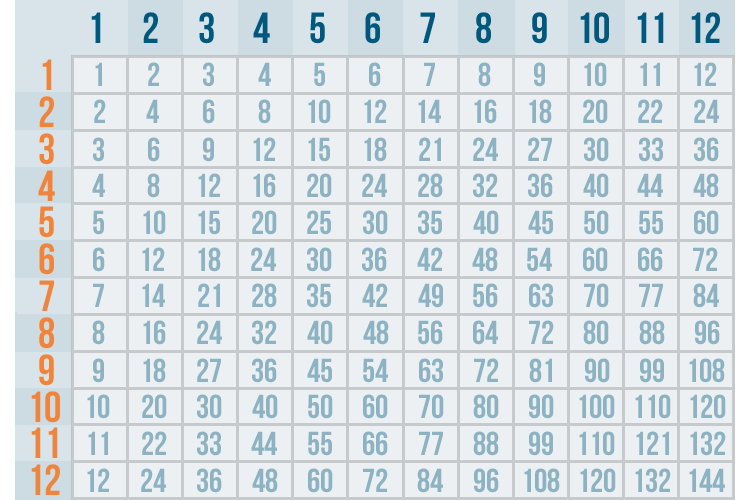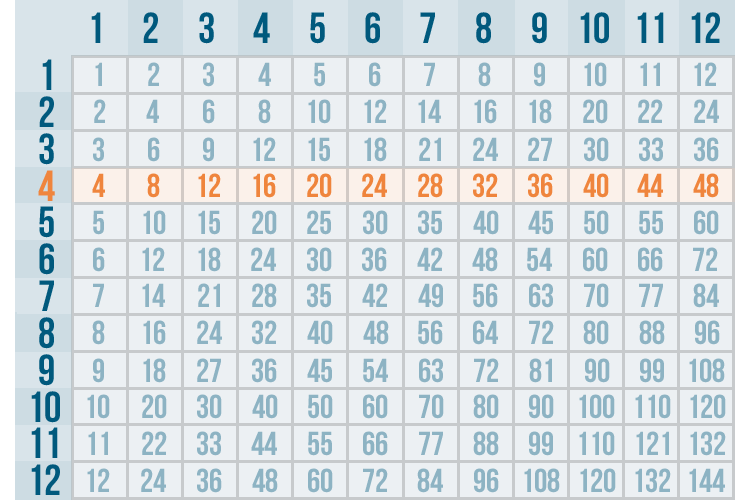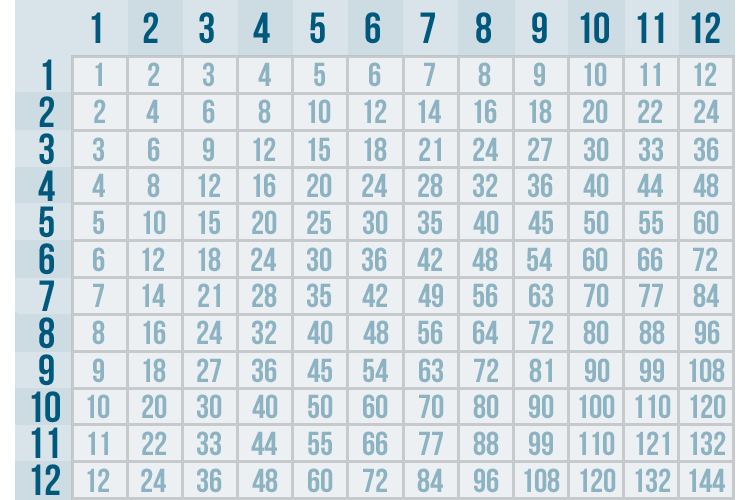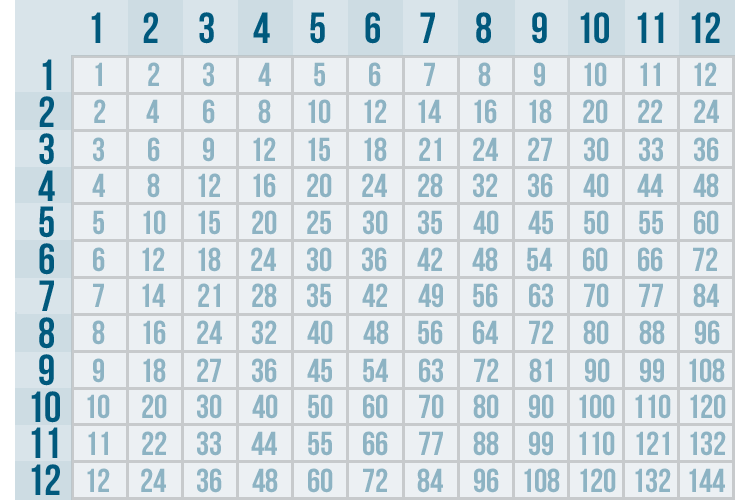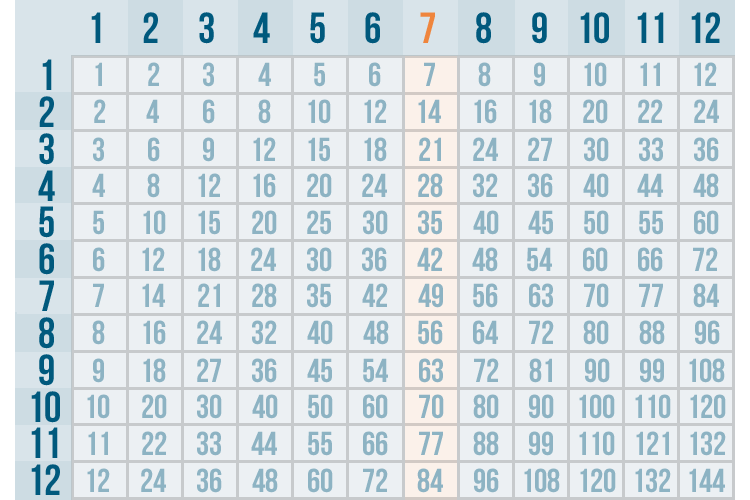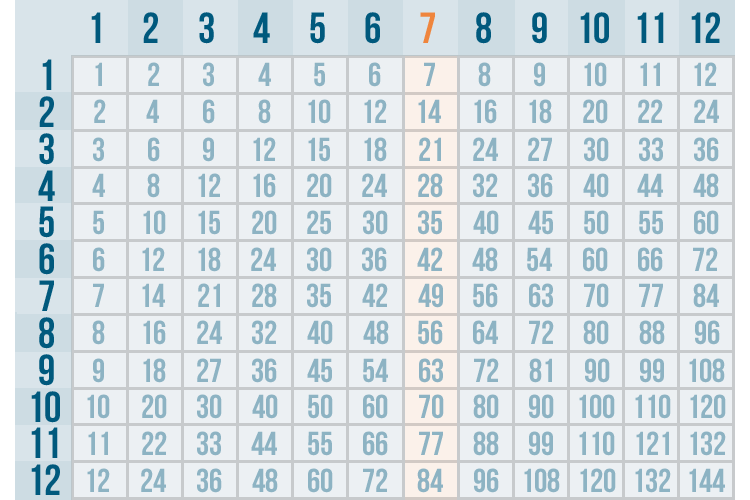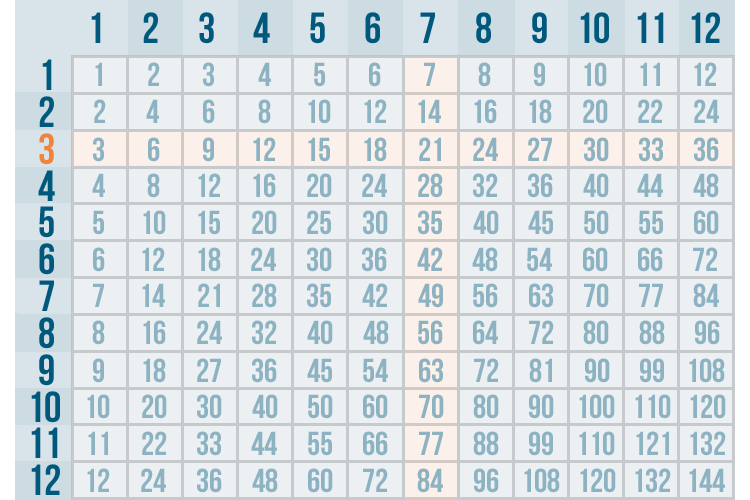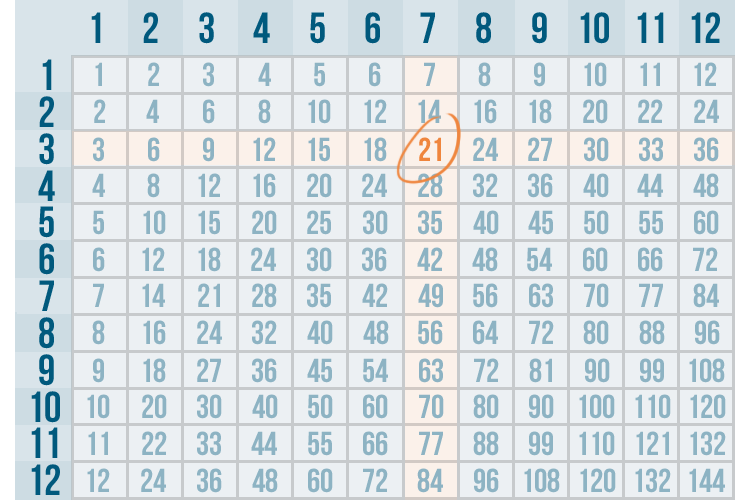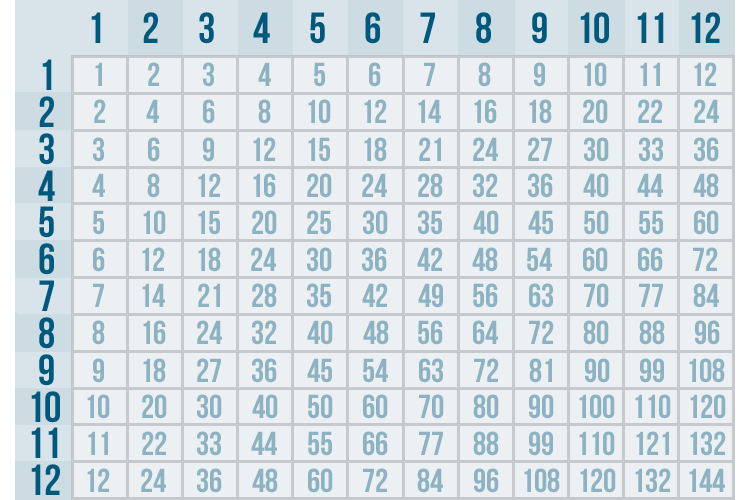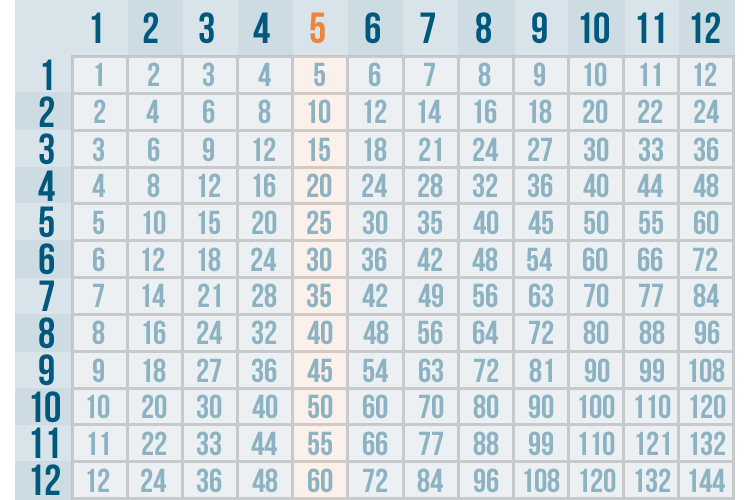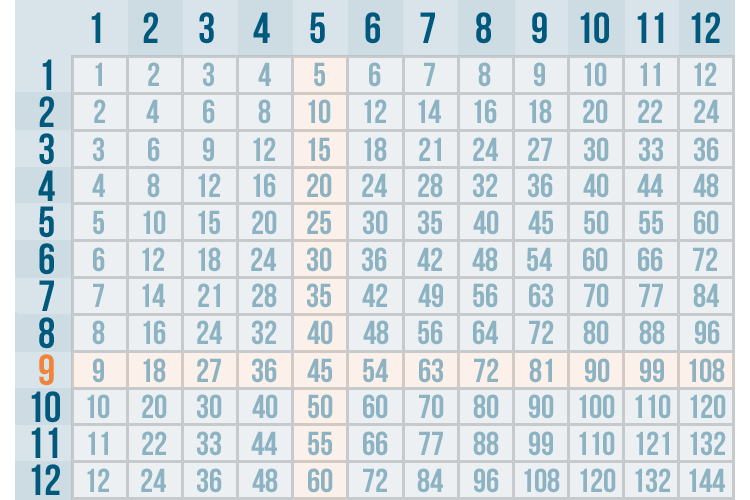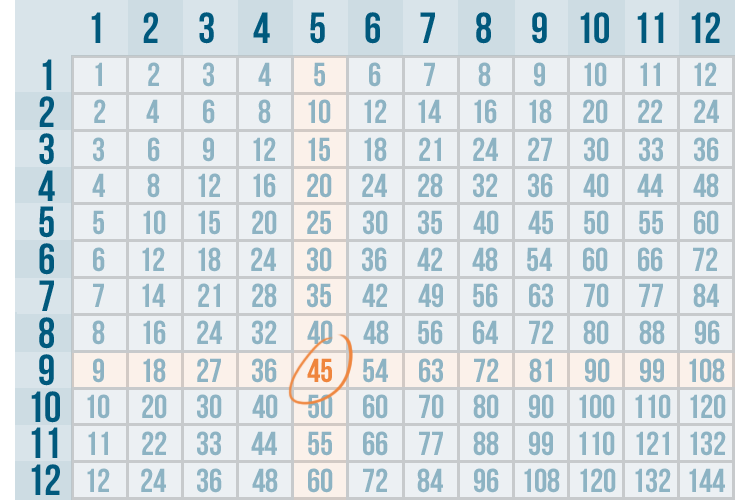Multiplication and Division
Introduction to Multiplication
Solving Multiplication Problems
You can use counting and adding to solve some small, simple multiplication problems. For example, on the last page, we were trying to figure out how many eggs we'd need to make three cakes. Each cake needed two eggs, so we wrote the problem like this:
3 x 2
As you know by now, that expression means three times two, or 3 cakes with 2 eggs each. It's a simple problem. To solve it, you can either count the eggs or add them — 2 + 2 + 2. Either way, the answer is 6. We know that 3 x 2 = 6.
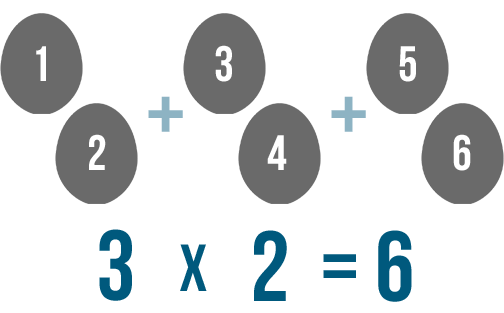
While this works for small problems, counting large numbers can take a long time— and it's pretty boring too. For this reason, most people memorize common multiplication problems so that they can solve them quickly. If this sounds hard, don't worry. The more you practice, the easier it will be to remember the answers to problems.
Until then, you can solve multiplication problems by using a multiplication table. It's also called a times table. A times table is a chart with the answers to all of the multiplication problems that use the numbers 1 through 12. It's simple to use. Click through the slideshow below to learn how.
Now you try. Practice using the times table to solve multiplication problems. Click two numbers to multiply them.



